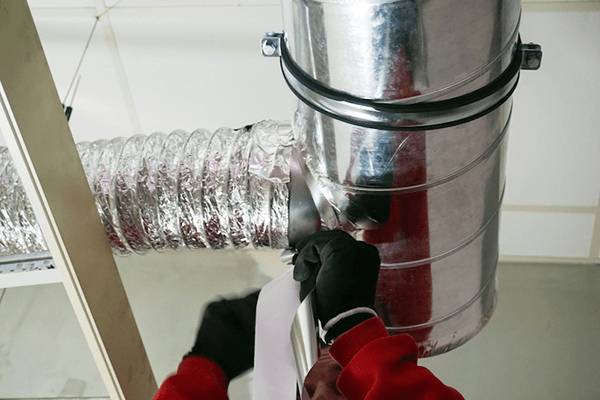The Duct System: Your Secret to Cutting Costs and Improving Comfort in Your Home
When temperatures rise in the summer, so does your cooling bill. And sometimes, you might wonder what you’re paying for — especially if your A/C doesn’t seem to be as effective as it used to be.
 A properly designed duct system is key to keeping inside temperatures low during hot summer months. Your duct system also helps circulate warm air through your house when winter rolls back around, and provides the infrastructure for better indoor air quality all year long.
A properly designed duct system is key to keeping inside temperatures low during hot summer months. Your duct system also helps circulate warm air through your house when winter rolls back around, and provides the infrastructure for better indoor air quality all year long.
A well-designed duct system optimizes the functionality of your HVAC system in many ways. You’ll enjoy quiet, quality airflow, an even distribution of cool or warm air throughout your house, and longer equipment life for your furnace or air conditioner. Not to mention you’ll save money on energy bills!
Learn about air duct systems and how you can optimize yours to stay cooler this summer while also keeping your bills low.
Types of Air Duct Systems
Duct systems are attached to your furnace to move warm or cool air through your home. One branch of the duct system carries warm or cool air from the furnace, while smaller offshoots carry that air to the vents throughout your home. Another duct pulls air back to be reconditioned.
Although most duct systems are made of rigid sheet metal, a few duct systems are flexible.
Rigid Ducts
 Most duct systems are made of rigid sheet metal because of the advantages of rigid duct systems:
Most duct systems are made of rigid sheet metal because of the advantages of rigid duct systems:
- Durable
- Quiet
- Easier to seal and clean than flexible ducts
- Compliant with most current building codes
Flexible Ducts
Flexible ducting allows pipes to mesh into tighter spaces and work around architectural elements in a home. However, if the pipe is compressed, it could compromise air flow. Most homes use rigid ducts since they maintain air pressure better than flexible ducts.
How Your Air Ducts Affect Your HVAC System
Your air duct system plays a huge role in the efficiency and functionality of your HVAC system. A properly designed and maintained duct system affects the following:
Noise
Smooth air flow is critical to help your forced-air system run quietly
The less resistance to airflow, the quieter your system
A correctly sized blower motor in the furnace is also important
Quick tip: What to do if you have a loud HVAC system
When annual service is performed on your system, ask your technician to test whether the fan speed is set at the proper levels for heating and cooling.
Fluid Airflow
- Puts less mechanical stress on the furnace blower and blower motor, which means your equipment is less likely to malfunction or need repairs
- Extends the life of components — like igniters in the furnace and the compressor in the air conditioner — by avoiding overwork
- Helps avoid frequent, wide temperature swings in the furnace’s heat exchanger, which could accelerate the aging process of this critical and expensive component
Comfort Throughout Your Home
A properly designed and well-maintained air duct system will help keep the temperatures consistent in every room.
Quick tip: What to do if you have uneven temperatures in your home
Consider upgrading to two-stage or modulating furnaces and air conditioners. These highly efficient and effective systems can make a big difference in improving your home’s comfort.
Save Money on Energy Bills
When air from a well-maintained furnace or air conditioner circulates effectively, it operates more efficiently, lowering heating and cooling bills.
How to Optimize your Duct System
There are some simple things you can do to get the most from your existing duct system. The following design and maintenance considerations will save you money on both utility bills and replacing parts in the future.
Seal Your Ducts
Leaking ducts can cost your heating and air conditioning system as much as 20% of its efficiency. Insulating ducts in your attic or crawlspace and sealing exposed ducts anywhere in your home can help you reduce the amount of lost cool or warm air.
Sealing attic or crawlspace ducts also limit access to animals or insects that might want to move in.
Sealed ducts create a barrier between potential pollutants that might be in your home, which improves indoor air quality.
Quick tip: How to seal a duct
Inspect the exposed sheet metal ducting in your furnace room — or anywhere else in, above or below your home — to identify air gaps. If you see a joint that isn’t sealed, or a visible gap, seal it with foil tape. Contact your trusted HVAC contractor if you need assistance.
Change Your Air Filter
If you have thinner filters, one to two inches wide, you’ll need to change them more often than thicker filters, which are typically three to five inches.
Though every home is different — depending on filter type, how dirty/leaky the house is and other factors — you can use these guidelines as a rule of thumb:
If you leave your A/C system or fan on every day, inspect your thinner filters every month.
If your A/C or fan is rarely on, you could probably inspect it less often.
Each house is different, so if your filter isn’t dirty upon a monthly inspection, choose a filter-change cycle that fits your home’s needs
Make sure that the filter you’re using isn’t overly restrictive to airflow. The Minimum Efficiency Reporting Value (MERV) rating rates the overall effectiveness of air filters. Higher-rated filters, while more effective, allow less air to flow through, and could make your furnace or A/C system work harder.
Keep Air Registers Clean and Clear
Make sure that all air supply registers are open and that return air grilles are unobstructed by furniture. Try not to cover floor registers with throw rugs.
Periodically dust off the return air grilles and supply registers to keep unwanted particles from finding their way into your home’s air system.




